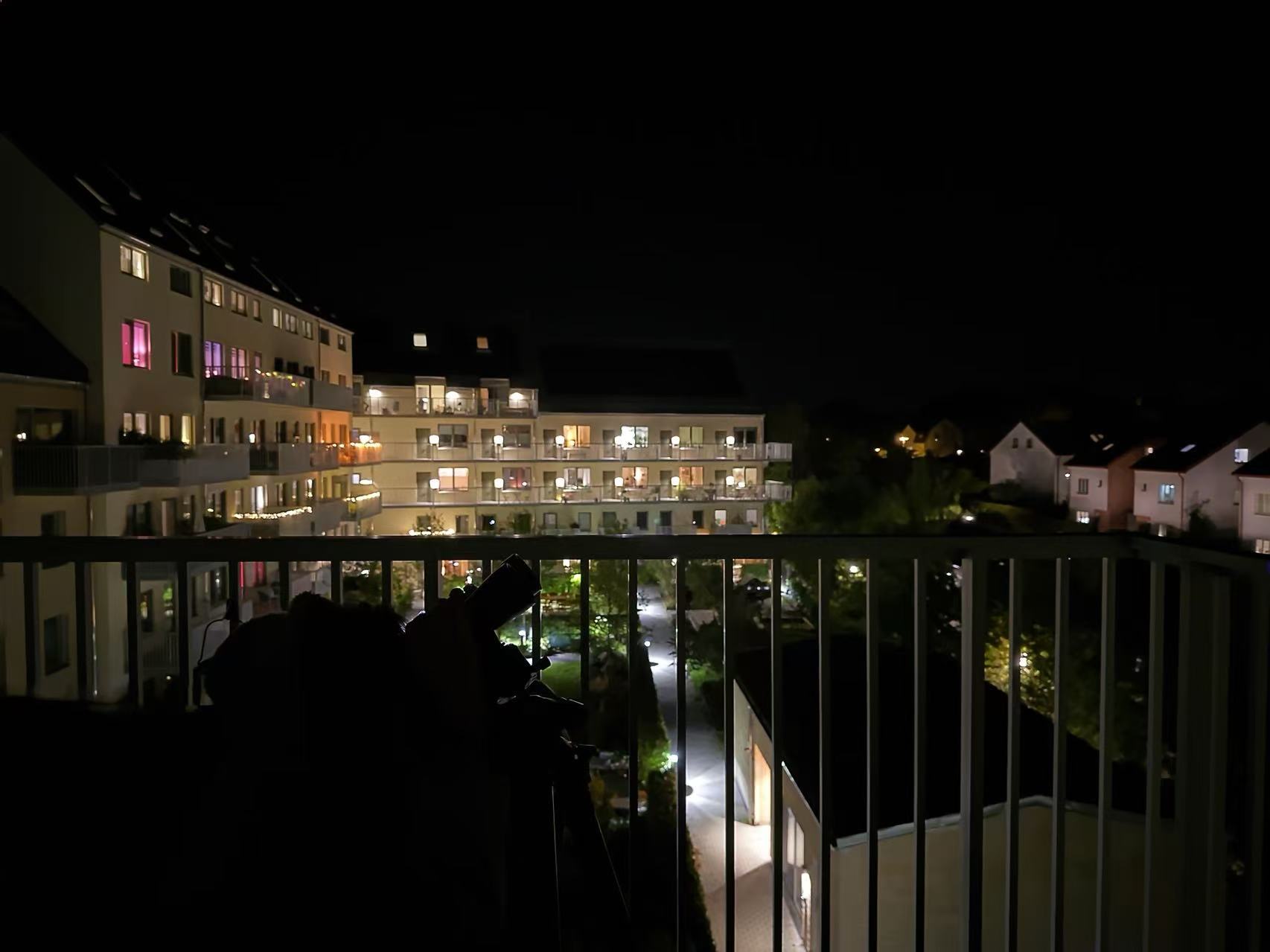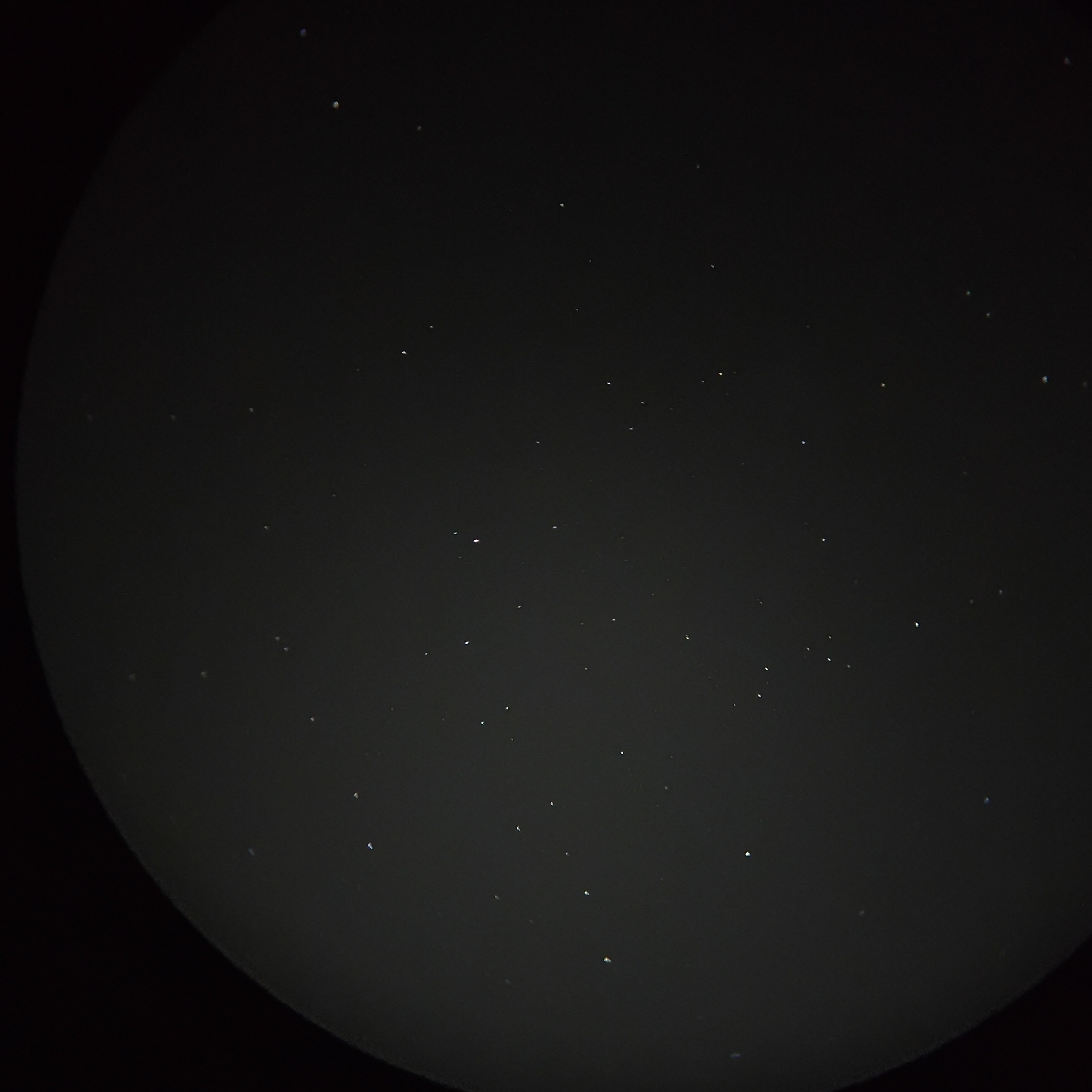Last night, I decided to take advantage of relatively clear skies and attempt some balcony astronomy with my binoculars and tripod. While not ideal conditions from my urban location (Bortle 7.1), it turned into an interesting lesson in the challenges of observing faint deep-sky objects.
Equipment Setup
For this observing session, I used:
- 10×50 binoculars
- Sturdy photographic tripod
- Binocular tripod adapter
- Red flashlight to preserve night vision
- Star chart and observing list

Binocular and tripod setup on balcony.
Observing Results
Successful Observations
- M31 - Andromeda Galaxy: Clearly visible as an elongated fuzzy patch.
- Double Cluster (NGC 869 & NGC 884): Beautiful in binoculars! Both clusters fit in the same field of view.
- M82 - Bode's Galaxy: Faint but detectable as a slim sliver of light with careful observation. M81 is barely visible.
The Challenging One: M33 Triangulum Galaxy
Result: Not seen
This was particularly puzzling since M33 has a relatively bright integrated magnitude of about 5.7. So why couldn't I see it?

M33 Triangulum Galaxy area through binoculars, shot under Bortle 7.1 light pollution.
The Surface Brightness Mystery
The key to understanding why M33 was invisible from my location lies in the concept of surface brightness.
An object's apparent magnitude represents the total light it emits, as if it were a point source like a star. However, galaxies spread their light over a much larger area, making them harder to detect against the background sky glow. M33 and M101 are both face-on spiral galaxies with low surface brightness, making them particularly challenging targets in urban environments. Although M33 is often cited as the most distant object visible to the naked eye under ideal conditions, this claim can be misleading for urban observers. The galaxy's large angular size spreads its light over a considerable area, resulting in very low surface brightness that easily disappears in light-polluted skies You really need dark skies to see them well.
Surface Brightness Analysis
M33 Data:
Average surface brightness: μobj = 23.1 mag/arcsec²
Urban sky background: μsky = 19.0 mag/arcsec²
Step 1: Convert to linear brightness
Iobj = 10-0.4 × 23.1 = 10-9.24 ≈ 5.75 × 10-10
Isky = 10-0.4 × 19.0 = 10-7.6 ≈ 2.51 × 10-8
Step 2: Calculate contrast
C = Iobj / Isky = 5.75 × 10-10 / 2.51 × 10-8 ≈ 0.0229
Contrast ≈ 2.3%
Step 3: Compare to human vision threshold
Human eye detection threshold (dark adapted): 2%–5%
Conclusion
With a contrast of only 2.3%, M33 sits right at the lower limit of human detection capability under my urban sky conditions (μsky = 19.0 mag/arcsec²). While theoretically possible to detect with perfect vision and optimal conditions, for most observers—including myself—it remains essentially invisible from light-polluted locations.
This experience reinforced the importance of considering surface brightness rather than just integrated magnitude when planning urban observing sessions. Some objects that appear "bright enough" on paper can be surprisingly challenging in practice!
Lessons Learned
- Surface brightness is often more important than integrated magnitude for extended objects
- Compact objects like star clusters fare better in light pollution than diffuse galaxies
- Even modest equipment can provide rewarding views with realistic expectations
- Urban astronomy requires careful object selection based on both magnitude and concentration
Despite not spotting M33, the session was successful overall. Seeing the Andromeda Galaxy and Double Cluster from my balcony reminded me that you don't need dark skies to enjoy astronomy—just adjusted expectations and appreciation for what's visible.
Further Reading & References
Practical Observing Guides
- BinocularSky.com - M33 Observing Guide - Detailed visibility analysis for binocular observers
Scientific Research
- Light Pollution to Surface Brightness Conversion Tables - Nature Scientific Reports study with Bortle scale to surface brightness correlations
Additional Resources
- Light Pollution Map - Interactive map showing Bortle scale levels worldwide
- Telescopius - M33 Details - Comprehensive data on the Triangulum Galaxy